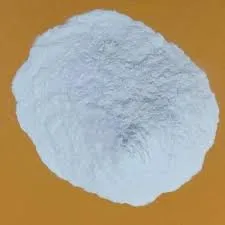
ديسمبر . 15, 2024 20:32 Back to list
Hydroxypropyl Methyl Understanding Its Applications and Benefits in Various Industries
Understanding Hydroxypropyl Methyl Cellulose Properties, Uses, and Applications
Hydroxypropyl Methyl Cellulose (HPMC) is a non-ionic, water-soluble polymer derived from cellulose, a natural polysaccharide found in plant cell walls. This versatile compound, often referred to as HPMC, is widely used across various industries due to its unique properties. In this article, we will explore the characteristics, applications, and significance of HPMC in different fields.
Properties of HPMC
HPMC features a remarkable ability to retain water, which makes it a valuable ingredient in formulations requiring viscosity and stability. The chemical structure of HPMC consists of hydroxypropyl and methyl groups attached to the cellulose backbone. This modification enhances its solubility in cold water while maintaining its thickening and film-forming abilities. HPMC is known for its high purity and offers a safe profile, making it suitable for numerous applications.
One of the most notable characteristics of HPMC is its shear-thinning property. When stress is applied, the viscosity decreases, allowing for easier application in various processes. Once the stress is removed, the viscosity returns to its original state, ensuring stability and effectiveness. HPMC is also resistant to many chemicals, making it ideal for use in formulations that require exposure to harsh environments.
Applications in Pharmaceuticals
Understanding Hydroxypropyl Methyl Cellulose Properties, Uses, and Applications
Additionally, HPMC serves as an excipient in various gel and ointment preparations. Its bioadhesive properties promote better adhesion to mucosal tissues, ensuring prolonged action of the therapeutic agents. Furthermore, its compatibility with a wide range of substances makes it an ideal choice for multifunctional formulations.
hydroxypropyl methyl

Use in Food Industry
HPMC has found a significant place in the food industry as a food additive. It is classified as a thickening agent, emulsifier, and stabilizer, contributing to texture, consistency, and shelf-life of food products. It is often used in sauces, dressings, and bakery products to improve texture and prevent separation.
In recent years, as consumer demand for clean-label products has increased, HPMC has gained popularity due to its plant-based origin and perceived safety. It is often used in gluten-free products as a substitute for wheat-based ingredients, helping to achieve dough elasticity and improve mouthfeel.
Construction Applications
The construction industry has also embraced the use of HPMC, especially in the formulation of cement-based products. It acts as a water-retaining agent, which is essential for maintaining hydration during the curing process. This property ensures that the cement sets correctly and enhances adhesion to various substrates. HPMC is commonly found in tile adhesives, wall joint compounds, and other dry mixture formulations.
Additionally, HPMC improves the workability of mortar and plaster, facilitating easier application by construction workers. Due to its effectiveness and versatility, it has become a staple in modern construction practices.
Conclusion
Hydroxypropyl Methyl Cellulose (HPMC) is a multifunctional polymer with a broad range of applications across diverse industries. Its unique properties, such as water retention, shear-thinning behavior, and biocompatibility, make it an essential ingredient in pharmaceuticals, food products, and construction materials. As technological advancements and innovations continue to emerge, HPMC is expected to play an increasingly vital role in meeting the demands of various markets. Its continued adoption demonstrates the growing recognition of HPMC as a safe, effective, and versatile solution for a multitude of applications.
-
Versatile Hpmc Uses in Different Industries
NewsJun.19,2025
-
Redispersible Powder's Role in Enhancing Durability of Construction Products
NewsJun.19,2025
-
Hydroxyethyl Cellulose Applications Driving Green Industrial Processes
NewsJun.19,2025
-
Exploring Different Redispersible Polymer Powder
NewsJun.19,2025
-
Choosing the Right Mortar Bonding Agent
NewsJun.19,2025
-
Applications and Significance of China Hpmc in Modern Industries
NewsJun.19,2025







